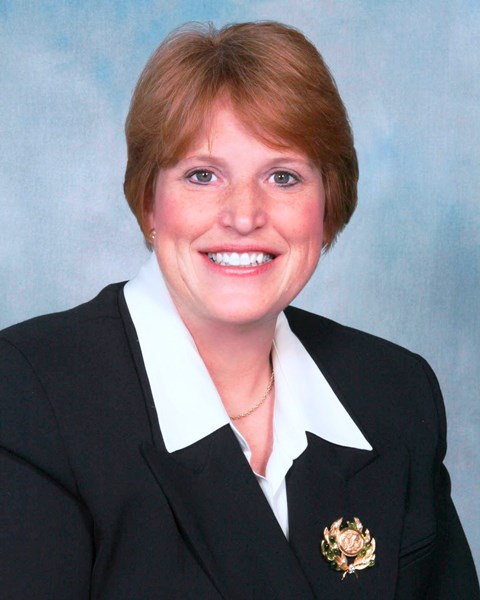In early February 2016, VyStar Credit Union ($6.1B, Jacksonville, FL) underwent an online banking conversion. Things did not go as planned.
A combination of pent-up demand and lower-than-needed technical capacity overwhelmed the credit union’s online banking system, making it inconvenient if not impossible for members to sign up.
That was five months ago. Today, the credit union has the benefit of hindsight to realize what it did right in the immediate aftermath of the conversion and how it would improve things in the future.
Here, Judy Walz, the credit union’s senior vice president of marketing and planning shares four lessons VyStar learned from its online banking conversion.
 |
| Judy Walz, SVP of Marketing and Planning, VyStar Credit Union |
Lesson No. 1: Things Won’t Always Be Perfect
The credit union started planning for this conversion two years prior to the actual event. As the date neared, the credit union anticipated its members would move onto the new system organically, in a staggered way.
Because of this, the credit union felt comfortable shutting down its online banking the Friday before the Monday conversion.
Our consultant said not to worry because not everyone will make the change at the same time, Walz says.
However, by Tuesday morning, 74,000 had signed up. By Wednesday morning, more than 100,000 of VyStar’s 516,000 members had registered. And the volume created technical difficulties.
However long you plan and test, things will not always be perfect, Walz says. We planned for two years. But things happen, and when they do you have to solve those problems and communicate the issues effectively.
Lesson No. 2: Members Don’t Necessarily Read Credit Union Communications
Leading up to the conversion, the credit union used seven different communication channels to prepare members for the change. Yet when the day came, Walz says, members had questions that VyStar already addressed in its initial communications.
People won’t read everything, Walz says. The members who do read tell you not to send them any more communications and the ones who don’t read are confused when the change is made.
So what’s a credit union to do? It can’t stop communication, right?
CU QUICK FACTS
vystar credit union
Data as of 03.31.16
- HQ: Jacksonville, FL
- ASSETS: $6.1B
- MEMBERS: 515,999
- BRANCHES: 51
- 12-MO SHARE GROWTH: 10.99%
- 12-MO LOAN GROWTH: 8.61%
- ROA: 0.91%
You need to be prepared to talk to members when they are prepared to talk to you, Walz advises. There are things I don’t read, but then I need to know something and I need people who are ready and willing to talk to me. That’s how we look at it. Stay ready for whenever our members’ are ready.
Lesson No. 3: Open, Customized Communication Is Best
VyStar was immediately aware when the issues started because its members spoke up.
The credit union beefed up its call center operation in anticipation of increased member feedback, but the incoming volume still overreached the capacity of its phone system.
And as is typical today, members took to social media to report something wasn’t right.
Right away, marketing employees responded, troubleshooting general issues or asking members to email a social media inbox the credit union created for the purpose. For questions marketing couldn’t answer, other back-office employees assisted.
You need to be prepared to talk to members when they are prepared to talk to you.
We were doing this away from the front-line call center folks so they could continue to work with members on the phone, Walz says. After a while, our marketing department got to know the issues and how to answer them.
In addition, the credit union invited local press to sit down with its CEO, Terry West, and broadcasted major updates on its Twitter page.
The credit union also sent frequently asked question sheets to all staff to keep everyone up to speed on the issues and how to resolve them. Walz stresses the importance of sending this information to all staff rather than just front-line employees because back-office folks communicate with members, too.
If an employee approves a member for a car loan and then that member has trouble with online banking, they try the call center, Walz says. But if they can’t get through and they have your number, they’ll call you. Members don’t call exactly who we want them to call. They’ll call everyone to get an answer.
Lesson No. 4: Involve The Executive Team
VyStar had three teams involved in the online banking conversion from the start: a core team, an extended team, and a steering committee composed of senior executives who helped set the direction for the conversion.
Later, as the conversion started, VyStar set up a war room in one of its larger conference rooms to centralize all aspects of the conversion. A screen ran diagnostics of the conversion in real time, showing how many members were trying to log in to the system. Walz estimates there were 20 employees working in the war room at any given time.
The war room housed the CEO, COO, chief information officer, chief security officer, Walz, a representative from the vendor, and a host of others. VyStar planned to keep the war room operational for five days but resolved most of the issues by Wednesday morning, so things were quiet by Friday.
But looping in senior executives at every step of the process made decision-making and communications easier, Walz says.
Our senior team was engaged and informed on what was happening so there was no stopping to educate them, Walz says. They already knew.
You Might Also Enjoy
-
4 Emails Pave The Path To Marketing Success
-
How Interra Credit Union Boosted Online Apps By 50% In One Year
-
4 Ways To Deliver A Superior Experience In The Virtual World
-
Mobile Payments On The Move

